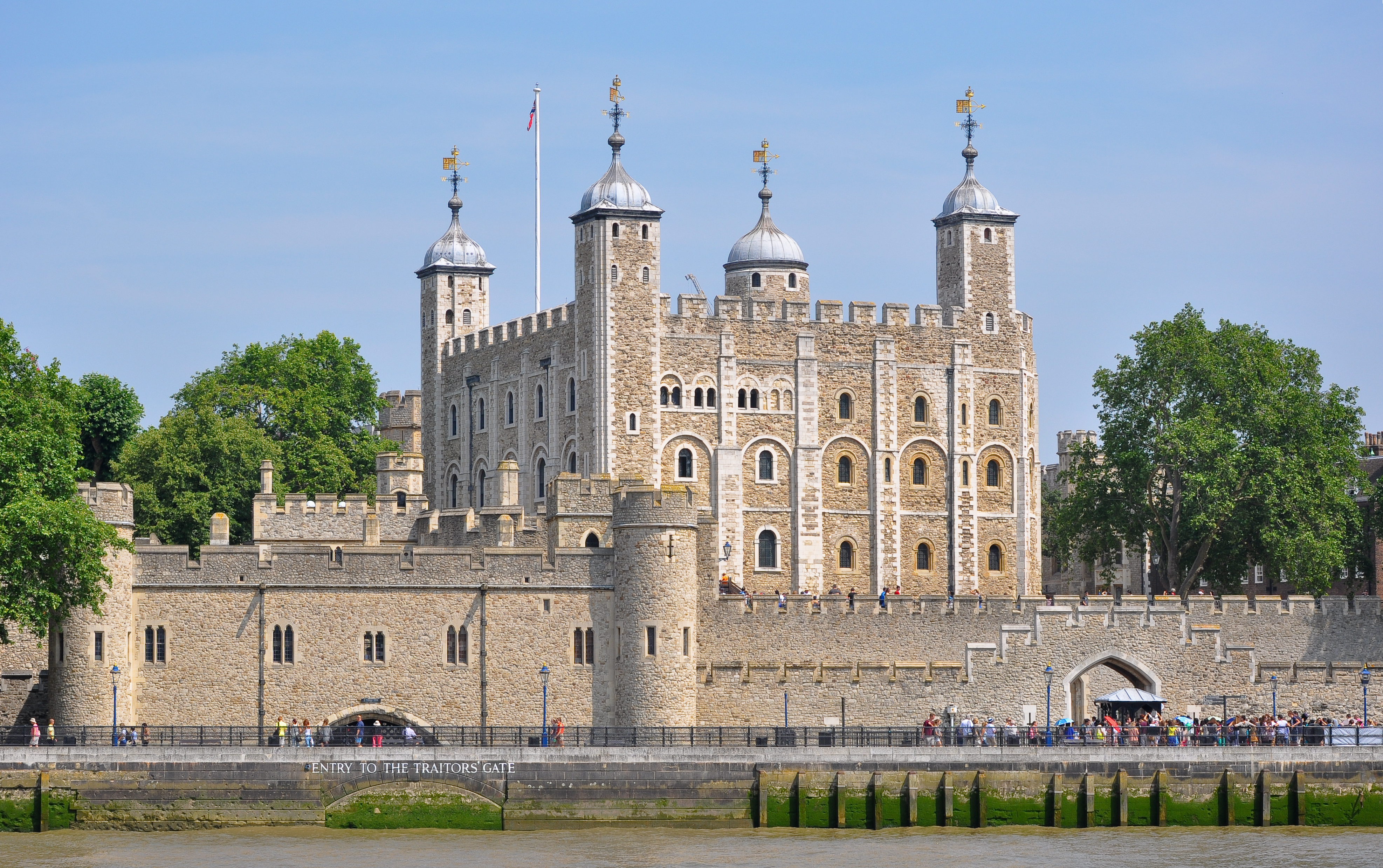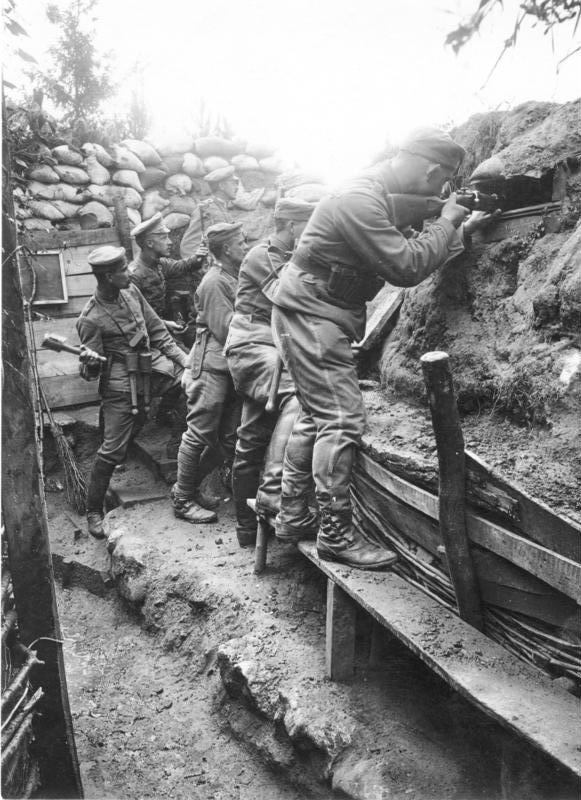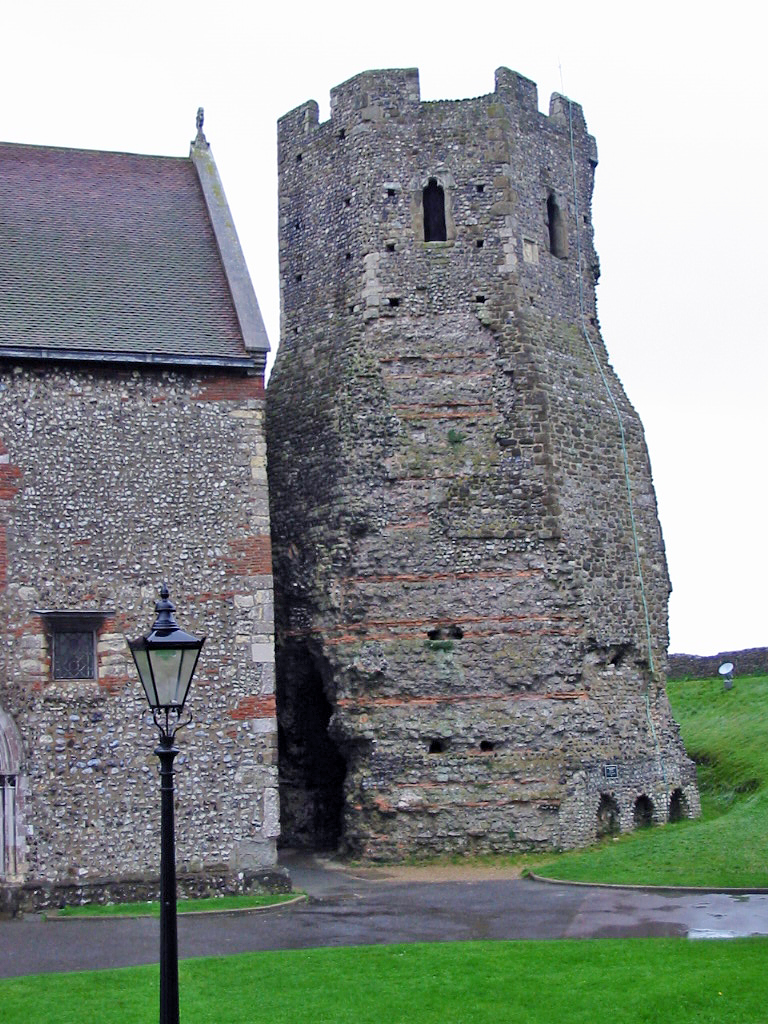|
Arrowslit
An arrowslit (often also referred to as an arrow loop, loophole or loop hole, and sometimes a balistraria) is a narrow vertical aperture in a fortification through which an archer can launch arrows or a crossbowman can launch bolts. The interior walls behind an arrow loop are often cut away at an oblique angle so that the archer has a wide field of view and field of fire. Arrow slits come in a variety of forms. A common one is the cross, accommodating the use of both the longbow and the crossbow. The narrow vertical aperture permits the archer large degrees of freedom to vary the elevation and direction of their bowshot, but makes it difficult for attackers to harm the archer since there is only a small target at which to aim. Balistraria, plural balistrariae, from balister, crossbowman can often be found in the curtain walls of medieval battlements beneath the crenellations. History The invention of the arrowslit is attributed to Archimedes during the siege of Syracuse ... [...More Info...] [...Related Items...] OR: [Wikipedia] [Google] [Baidu] |
Castle
A castle is a type of fortified structure built during the Middle Ages predominantly by the nobility or royalty and by military orders. Scholars debate the scope of the word ''castle'', but usually consider it to be the private fortified residence of a lord or noble. This is distinct from a palace, which is not fortified; from a fortress, which was not always a residence for royalty or nobility; from a ''pleasance'' which was a walled-in residence for nobility, but not adequately fortified; and from a fortified settlement, which was a public defence – though there are many similarities among these types of construction. Use of the term has varied over time and has also been applied to structures such as hill forts and 19th-20th century homes built to resemble castles. Over the approximately 900 years when genuine castles were built, they took on a great many forms with many different features, although some, such as curtain walls, arrowslits, and portcullises, wer ... [...More Info...] [...Related Items...] OR: [Wikipedia] [Google] [Baidu] |
Loophole (firearm)
A loophole is a protected small opening, which allows a firearm to be aimed and discharged, while providing cover and concealment for the rifleman. To prevent detection, the rifle's muzzle should not protrude through the loophole, particularly at night to hide the muzzle flash. Arrowslit The precursor to the loophole for firearms was the arrowslit, which is a narrow aperture in a fortification for an archer to launch arrows or an arbalist to launch crossbow bolts. The earliest use of the arrowslit was alleged to have been by Archimedes during the siege of Syracuse in 214–212 BC. Arrowslits were used in ancient Greek warfare and by the military of ancient Rome. There was a reintroduction of arrowslits during the medieval warfare period at Dover Castle and Framlingham Castle in England and by Richard the Lionheart at Château Gaillard in France. First World War During the First World War, the static movement of trench warfare and a need for protection from snipers ... [...More Info...] [...Related Items...] OR: [Wikipedia] [Google] [Baidu] |
Meurtriere
A murder hole or meurtrière is a hole in the ceiling of a gateway or passageway in a fortification through which the defenders could shoot, throw or pour harmful substances or objects such as rocks, arrows, scalding water, hot sand, quicklime, or boiling oil, down on attackers. Boiling oil was rarely used because of its cost. Similar holes, called machicolations, were often located in the curtain walls of castles, fortified manor houses, and city walls. The parapet would project over corbels so that holes would be located over the exterior face of the wall, allowing the defenders to target attackers at the base of the wall. The primary difference between these two features is in their location. Murder holes were located on the interiors of castles and other fortified buildings at the entranceway. Their supposed intention was to discourage (or kill) invaders once they had breached the walls, though it has been suggested that they may have in some cases also facilitated more ... [...More Info...] [...Related Items...] OR: [Wikipedia] [Google] [Baidu] |
Siege Of Syracuse (214–212 BCE)
Siege of Syracuse may refer to: Sieges By the Athenians: * Siege of Syracuse (415–413 BC), during the Sicilian Expedition By, or in league with, the Carthaginians: * Siege of Syracuse (397 BC) * Siege of Syracuse (343 BC) * Siege of Syracuse (311–309 BC) * Siege of Syracuse (278 BC) By the Roman Republic: * Siege of Syracuse (213–212 BC), during the Second Punic War against Carthage By the Arab Aghlabid dynasty: * Siege of Syracuse (827–828) * Siege of Syracuse (868) * Siege of Syracuse (877–878) The siege of Syracuse from 877 to 878 led to the fall of the city of Syracuse, the Roman capital of Sicily, to the Aghlabids. The siege lasted from August 877 to 21 May 878 when the city, effectively left without assistance by the central Byzan ... Other * ''Siege of Syracuse'' (film), a 1960 historical drama film See also * List of sieges of Syracuse {{disambiguation ... [...More Info...] [...Related Items...] OR: [Wikipedia] [Google] [Baidu] |
Firearm
A firearm is any type of gun designed to be readily carried and used by an individual. The term is legally defined further in different countries (see Legal definitions). The first firearms originated in 10th-century China, when bamboo tubes containing gunpowder and pellet projectiles were mounted on spears to make the portable fire lance, operable by a single person, which was later used effectively as a shock weapon in the Siege of De'an in 1132. In the 13th century, fire lance barrels were replaced with metal tubes and transformed into the metal-barreled hand cannon. The technology gradually spread throughout Eurasia during the 14th century. Older firearms typically used black powder as a propellant, but modern firearms use smokeless powder or other propellants. Most modern firearms (with the notable exception of smoothbore shotguns) have rifled barrels to impart spin to the projectile for improved flight stability. Modern firearms can be described by their caliber ( ... [...More Info...] [...Related Items...] OR: [Wikipedia] [Google] [Baidu] |
Gunpowder
Gunpowder, also commonly known as black powder to distinguish it from modern smokeless powder, is the earliest known chemical explosive. It consists of a mixture of sulfur, carbon (in the form of charcoal) and potassium nitrate ( saltpeter). The sulfur and carbon act as fuels while the saltpeter is an oxidizer. Gunpowder has been widely used as a propellant in firearms, artillery, rocketry, and pyrotechnics, including use as a blasting agent for explosives in quarrying, mining, building pipelines and road building. Gunpowder is classified as a low explosive because of its relatively slow decomposition rate and consequently low brisance. Low explosives deflagrate (i.e., burn at subsonic speeds), whereas high explosives detonate, producing a supersonic shockwave. Ignition of gunpowder packed behind a projectile generates enough pressure to force the shot from the muzzle at high speed, but usually not enough force to rupture the gun barrel. It thus makes a good pro ... [...More Info...] [...Related Items...] OR: [Wikipedia] [Google] [Baidu] |
Slighting
Slighting is the deliberate damage of high-status buildings to reduce their value as military, administrative or social structures. This destruction of property sometimes extended to the contents of buildings and the surrounding landscape. It is a phenomenon with complex motivations and was often used as a tool of control. Slighting spanned cultures and periods, with especially well-known examples from the English Civil War in the 17th century. Meaning and use Slighting is the act of deliberately damaging a high-status building, especially a castle or fortification, which could include its contents and the surrounding area. The first recorded use of the word 'slighting' to mean a form of destruction was in 1613. Castles are complex structures combining military, social, and administrative uses, and the decision to slight them took these various roles into account. The purpose of slighting was to reduce the value of the building, whether military, social, or administrative. Des ... [...More Info...] [...Related Items...] OR: [Wikipedia] [Google] [Baidu] |
Château Gaillard
Château Gaillard () is a medieval castle ruin overlooking the River Seine above the commune of Les Andelys, in the French department of Eure, in Normandy. It is located some north-west of Paris and from Rouen. Construction began in 1196 under the auspices of Richard the Lionheart, who was simultaneously King of England and feudal Duke of Normandy. The castle was expensive to build, but the majority of the work was done in an unusually short period of time. It took just two years and, at the same time, the town of Petit Andely was constructed. Château Gaillard has a complex and advanced design, and uses early principles of concentric fortification; it was also one of the earliest European castles to use machicolations. The castle consists of three enclosures separated by dry moats, with a keep in the inner enclosure. Château Gaillard was captured in 1204 by the king of France, Philip II, after a lengthy siege. In the mid-14th century, the castle was the residence of th ... [...More Info...] [...Related Items...] OR: [Wikipedia] [Google] [Baidu] |
Richard I Of England
Richard I (8 September 1157 – 6 April 1199) was King of England from 1189 until his death in 1199. He also ruled as Duke of Normandy, Duke of Aquitaine, Aquitaine and Duchy of Gascony, Gascony, Lord of Cyprus, and Count of Poitiers, Counts and dukes of Anjou, Anjou, Count of Maine, Maine, and Count of Nantes, Nantes, and was overlord of Brittany at various times during the same period. He was the third of five sons of King Henry II of England and Eleanor of Aquitaine and seemed unlikely to become king, but all his brothers except the youngest, John, King of England, John, predeceased their father. Richard is known as Richard Cœur de Lion (Norman language, Norman French: ''Le quor de lion'') or Richard the Lionheart because of his reputation as a great military leader and warrior. The troubadour Bertran de Born also called him Richard Oc-e-Non (Occitan language, Occitan for ''Yes and No''), possibly from a reputation for wikt:terseness, terseness. By the age of 16, Rich ... [...More Info...] [...Related Items...] OR: [Wikipedia] [Google] [Baidu] |
Framlingham Castle
Framlingham Castle is a castle in the market town of Framlingham in Suffolk in England. An early motte and bailey or ringwork Norman castle was built on the Framlingham site by 1148, but this was destroyed (slighted) by Henry II of England in the aftermath of the Revolt of 1173–1174. Its replacement, constructed by Roger Bigod, the Earl of Norfolk, was unusual for the time in having no central keep, but instead using a curtain wall with thirteen mural towers to defend the centre of the castle. Despite this, the castle was successfully taken by King John in 1216 after a short siege. By the end of the 13th century, Framlingham had become a luxurious home, surrounded by extensive parkland used for hunting. During the 15th and 16th centuries Framlingham was at the heart of the estates of the powerful Mowbray and Howard families. Two artificial meres were built around the castle, which was expanded in fashionable brick. With a large, wealthy household to maintain, the castle p ... [...More Info...] [...Related Items...] OR: [Wikipedia] [Google] [Baidu] |
Dover Castle
Dover Castle is a medieval castle in Dover, Kent, England and is Grade I listed. It was founded in the 11th century and has been described as the "Key to England" due to its defensive significance throughout history. Some sources say it is the largest castle in England, a title also claimed by Windsor Castle. History Iron age This site may have been fortified with earthworks in the Iron Age or earlier, before the Romans invaded in AD 43. This is suggested on the basis of the unusual pattern of the earthworks which does not seem to be a perfect fit for the medieval castle. Excavations have provided evidence of Iron Age occupation within the locality of the castle, but it is not certain whether this is associated with the hillfort. Roman era The site also contains one of Dover's two Roman lighthouses (or pharoses), one of only three surviving Roman-era lighthouses in the world, and the tallest and most complete standing Roman structure in England. It is also claimed to be B ... [...More Info...] [...Related Items...] OR: [Wikipedia] [Google] [Baidu] |
City Wall
A defensive wall is a fortification usually used to protect a city, town or other settlement from potential aggressors. The walls can range from simple palisades or earthworks to extensive military fortifications with towers, bastions and gates for access to the city. From ancient to modern times, they were used to enclose settlements. Generally, these are referred to as city walls or town walls, although there were also walls, such as the Great Wall of China, Walls of Benin, Hadrian's Wall, Anastasian Wall, and the Atlantic Wall, which extended far beyond the borders of a city and were used to enclose regions or mark territorial boundaries. In mountainous terrain, defensive walls such as '' letzis'' were used in combination with castles to seal valleys from potential attack. Beyond their defensive utility, many walls also had important symbolic functions representing the status and independence of the communities they embraced. Existing ancient walls are almost always masonr ... [...More Info...] [...Related Items...] OR: [Wikipedia] [Google] [Baidu] |
.jpg)









